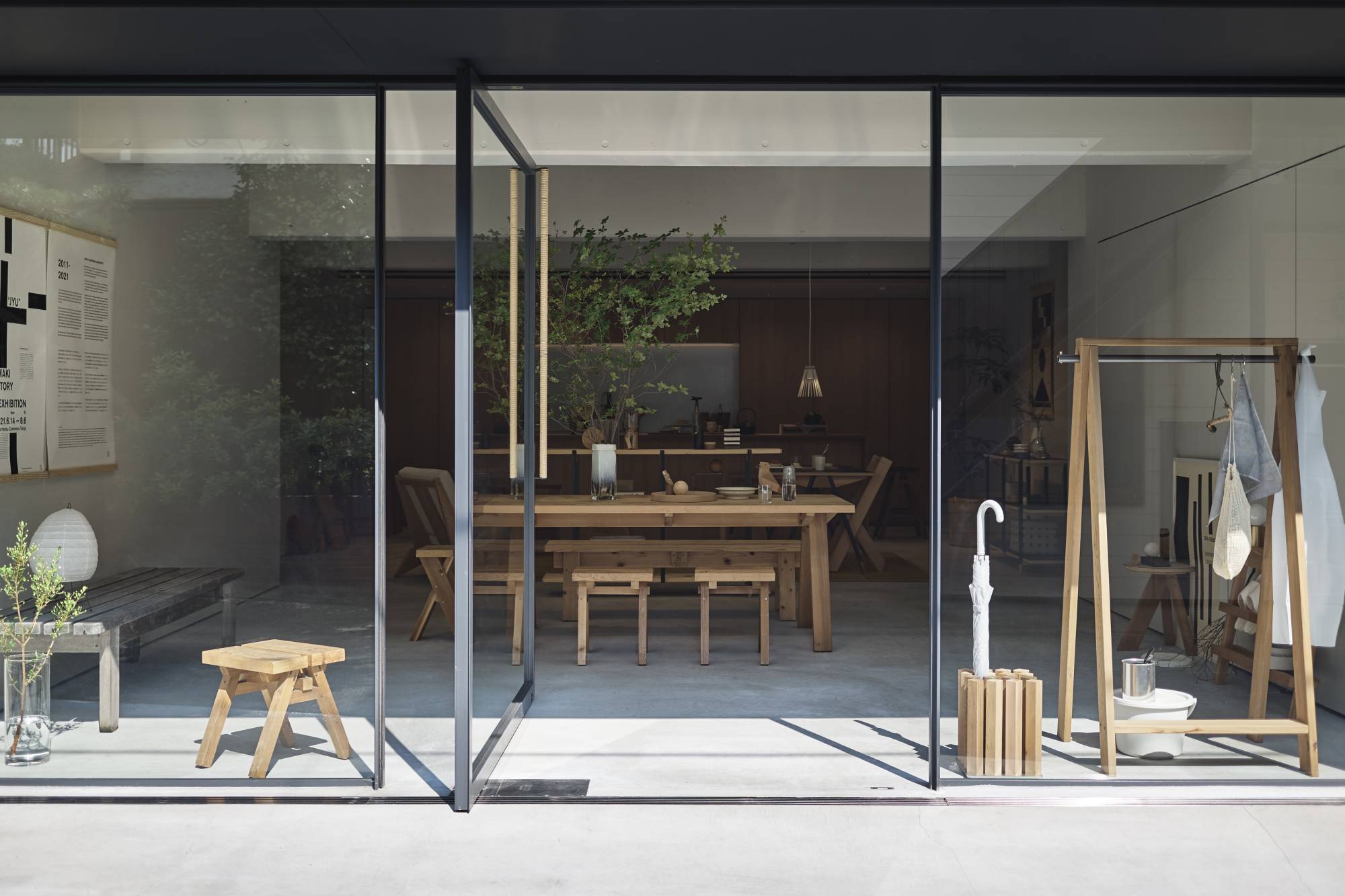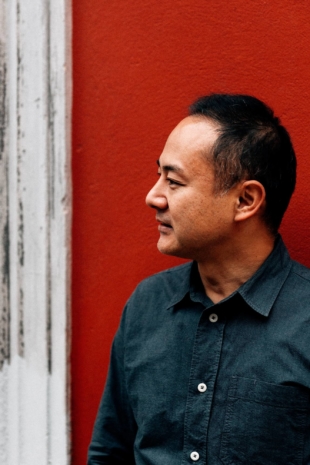The red cedar bench tells 10 years’ worth of stories. The utilitarian seat was among the first pieces created by Ishinomaki Laboratory, a DIY furniture project founded by architect Keiji Ashizawa to empower locals in disaster-hit northeast Japan in the aftermath of the 2011 tsunami.
For much of the past decade, through sunshine and snow, the bench — its solid simplicity and functional lines designed by Taiji Fujimori — has sat outside Ishinomaki Laboratory’s workshop in Miyagi Prefecture, providing a welcome resting place for staff.
And now, the bench, organically grained and dark gray from the passing of time, is one of countless items on display at a new Tokyo exhibition celebrating a decade of Ishinomaki Laboratory, charting the project’s dynamic evolution from a local public workshop to a respected global design brand, one still firmly rooted in the goal of social impact.
Today, the Ishinomaki Laboratory brand is sold in design stores around the world, with a repertoire of around 105 products — mainly furniture and other wooden lifestyle products, plus a fabric series — created in collaboration with 36 design companies, including Torafu Architects, Drill Design and Norm Architects.
One key partner is furniture company Karimoku, which launched the Ishinomaki Laboratory by Karimoku collaborative brand in summer 2019, enabling its manufacturing output to hit new heights.
Other growth markers include its expanding Made in Local initiative, in which licensed partners, from London to the Philippines, produce Ishinomaki products using locally available materials, and the recent opening of Ishinomaki Home Base, a cafe, showroom, event space and four-room guesthouse (a new community workshop is also in the pipelines), just a few minutes from its woodworking venue in Ishinomaki.

“We could not have imagined that we would have evolved from a small public workshop to the furniture brand that we are today,” Ashizawa says, reflecting on the past decade. “Looking back, it truly has been a culmination of small steps and ideas, built up on one another, by a community of collaborators. We’re improving a bit each day and charting our path as we go.”
It all began in April 2011, when Ashizawa began regular visits to Ishinomaki to help clean up his friend’s restaurant (which he had designed), one of countless local businesses hit by the 3/11 tsunami.
“During one of those visits, I stumbled upon Jidaiya, a local shop,” Ashizawa says. “The owner had fixed it up himself using DIY skills. Other shop owners along that street had also begun to take matters into their own hands and begin the process of rebuilding. With this burst of inspiration from local DIY, I realized that a public workshop could be the answer — a place where people could freely come and go to get the tools and materials necessary to rebuild, as well as be assisted by those with the technical skills to help them realize their projects.”
And so Ishinomaki Laboratory was born. “When we launched, we were primarily focused on speeding up the process of recovery and reconstruction through DIY and design. I had also been pondering what I could do to help with my specific skill set as an architect and designer, and felt that establishing the workshop space could be a worthwhile contribution.”



Key to the project was — and remains — the charismatic Takahiro Chiba, a former sushi-chef-turned-furniture-builder, who anchors a staff of six at the brand’s flagship Ishinomaki workshop.
It didn’t take long for the brand’s now signature red cedar wood furniture products — each fusing a functional simplicity with a clean aesthetic that fits perfectly with contemporary home settings — to turn heads in the design world.
“Ishinomaki Laboratory represents the most primitive, universal elements of furniture and design,” says Hiroshi Kato, vice president of Karimoku Furniture Inc. “The idea that with just one bench, a person will then naturally sit on it, then another person next to them, leading to a conversation, communication — in essence, the building blocks of society.”
On display at the exhibition is the classic, timeless solidity of the Ishinomaki Bench, initially designed by Ashizawa for an outdoor film screening event; the Ishinomaki Stool, brought to life during a 2011 workshop series held by American furniture company Herman Miller for those living in temporary accommodation; the Endai bench by Taiji Fujimori; the angular minimalism of Norm Architects’ 105° Lounge Chair with Kvadrat textiles; and many more recent collaborations.
One new product also making its debut at the exhibition is the Ishinomaki Penguin Kit by Torafu Architects, the project’s latest DIY wooden animal kit (with proceeds going toward supporting wildlife impacted by global warming).
And over the next 10 years? Ishinomaki Laboratory is likely to remain rooted in community empowerment, fusing quality design with social impact — locally as well as globally.
“Thanks to the burst of volunteerism after 2011, Ishinomaki is perhaps one of the more vibrant post-disaster cities, with unique community-based initiatives that continue to inspire and innovate,” Ashizawa says. “We are hopeful that the region can be even more creative, and that Ishinomaki Laboratory can be a part of making that a reality. While we have transitioned from being a volunteer-based public workshop into a furniture brand, we are still very much a part of the Ishinomaki community.”
“‘Jyu’: 10 Years of Ishinomaki Laboratory” runs at Karimoku Commons Tokyo through Aug. 6. For more information, visit ishinomaki-lab.org.
In a time of both misinformation and too much information, quality journalism is more crucial than ever.
By subscribing, you can help us get the story right.
SUBSCRIBE NOW


